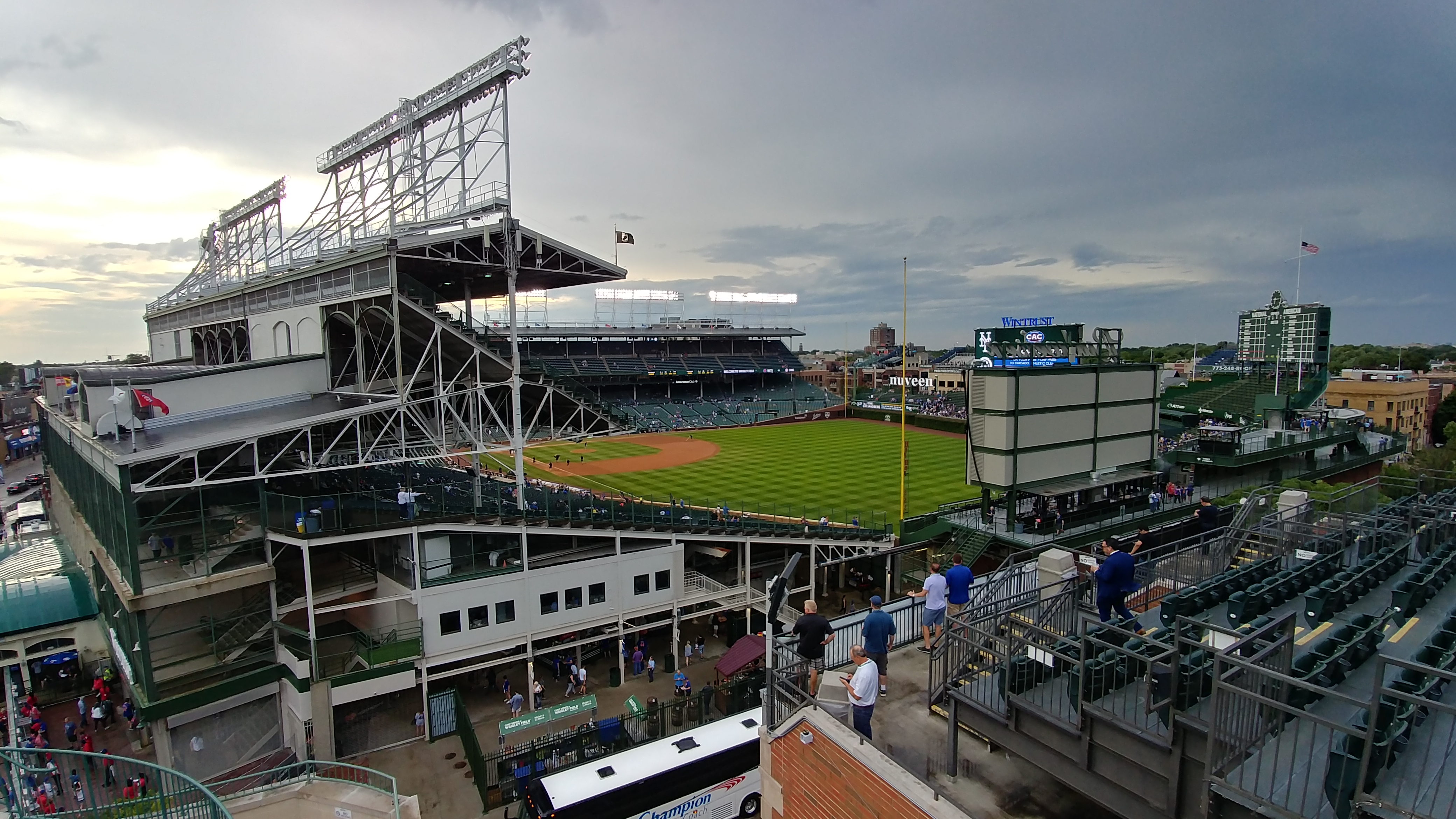This morning two bad things happened to convicted felon and all-around slimy guy Paul Manafort. First, he got sentenced to another 47 months in jail as a result of his second conviction:
In [Federal] court Wednesday, Judge Amy Berman Jackson criticized Manafort and his defense attorneys for repeatedly blaming his hard fall from power on his decision to work for Trump, which attracted the attention of the special counsel investigating Russian interference in that campaign.
“This defendant is not public enemy number one, but he’s also not a victim either,” Jackson said. “There’s no question this defendant knew better, and he knew exactly what he was doing.”
The question of whether anyone in Donald Trump’s campaign “conspired or colluded with” the Russian government “was not presented in this case,” she said, so for Manafort’s attorneys to emphasize that no such collusion was proved, she said, is “a non-sequitur.”
Just minutes later, a state grand jury in New York indicted Manafort on 16 felony counts that could keep him in prison for the rest of his life:
The new state charges against Mr. Manafort are contained in a 16-count indictment that alleges a yearlong scheme in which he falsified business records to obtain millions of dollars in loans, [Manhattan district attorney Cyrus] Vance said in a news release after the federal sentencing.
“No one is beyond the law in New York,” he said, adding that the investigation by the prosecutors in his office had “yielded serious criminal charges for which the defendant has not been held accountable.”
The indictment grew out of an investigation that began in 2017, when the Manhattan prosecutors began examining loans Mr. Manafort received from two banks.
Remember, whatever clemency Manafort could get under the President's pardon power, that power does not extend to state crimes. The same goes with related state-level investigations into the Trump Organization and the president himself that appear to have started within multiple New York law-enforcement agencies.
Josh Marshall has written often that the Trump Organization's business "would never survive first contact with law enforcement." As anyone who has followed Donald Trump's career over the year knows, this is axiom. And it is happening.
First, today is the bicentennial of Illinois becoming a state, which involved a deal to steal Chicago from Wisconsin:
If Illinoisans had played by the rules to get statehood, Chicagoans would be cheeseheads. By all rights, the Wisconsin border should have been set at the southern tip of Lake Michigan when Illinois was admitted into the union, 200 years ago Monday.
That would have made a 60-mile strip of what’s now northern Illinois a part of southern Wisconsin. Stripped of the smokestacks of Chicago’s factories, Illinois’ landscape would have been dominated by grain elevators and dairy barns. But that didn’t happen.
The fix was in, even as the state of Illinois was conceived.
It's a good story. Today is also the 75th anniversary of Pizzeria Uno opening in Chicago, which introduced deep-dish pizza to the masses:
Pizza had been around the city’s Italian cafes for decades. It was served in tiny wedges, and mainly used as an appetizer. Even on a full pie the crust was wafer-thin.
The pizza at Pizzeria Uno was going to be different—cooked in a deep dish, with a thick crust and heaps of cheese. Who came up with this innovative style? Riccardo? Sewell? Their chef, Rudy Malnati? The debate goes on.
So on a wartime Friday evening in December, Pizzeria Uno opened with little fanfare. Business was slow at first. Gradually, Chicago-style pizza caught on. By 1955, people were lining up outside in the cold, waiting to get in.
Longtime readers know that despite my Chicagoan heritage, I prefer New York-style big slices that you have to drain before eating. Preferrably bought from a window on 3rd Avenue around 4am.
Yesterday, the Cubs and Mets played to a 1-1 draw at Wrigley when the game got suspended in the 10th due to torrential rain. (They resume in about 20 minutes.) My department bought us rooftop tickets, so we got to see most of the game between the waves of thunderstorms that preceded and interrupted it:

I got supremely lucky: the first wave of thunderstorms hit just as I was getting on the bus to go to the park, finished its deluge just as I got off the bus, and the second wave hit while I was on the bus going back home. So I caught the tail end of the second wave, but only a few drops between the bus and my house.
I'll update this post with the final score whenever they have one.
Update: The Cubs won, 2-1 in the 11th.
The New York City subway, with its passive air exchange system and tunnels too small for active ventilation or air conditioning, have gotten excessively hot this summer:
On Thursday, temperatures inside at least one of the busiest stations reached 40°C—nearly 11°C warmer than the high in Central Park.
The Regional Plan Association, an urban planning think tank for the greater metropolitan area, took a thermometer around the system’s 16 busiest stations, plus a few more for good measure, and shared the data with CityLab. A platform at Union Square Station had the 40°C reading at 1 p.m., which was the hottest they found, although Brooklyn Bridge-City Hall and Columbus Circle weren’t far off at 39°C and 38½°C, at around 10 and 11 a.m., respectively. Twelve out of the 16 busiest stops boiled at or over the 32°C mark in the late morning and early afternoon.
One might think that subway stations would offer crisp respite to sweaty New Yorkers, being underground and all. But you’d be wrong. Heat doesn’t only “rise”—it just diffuses to cooler areas, which can include below-ground spaces. Plus, only a few of the city’s 472 stations are equipped with air conditioning; most rely on a passive ventilation system better known for their Marilyn Monroe moments above ground. This system was built in the days before AC, and the MTA says it’s not possible to squeeze the station-cooling machinery that other metro systems have inside New York’s narrow tunnels. Meanwhile, the units that cool passengers inside cars actually shed heat into the stations as trains pass through.
That onboard air-conditioning can fail, too. The MTA has also seen a rising number of complaints about overheated cars in recent years. In today’s issue of Signal Problems, his indispensable newsletter focused on subway accountability, the journalist Aaron Gordon reports that “about two percent of all subway cars in service on any given day might not have working A/C,” according to the MTA. That means at least 100 cars are roasting passengers on any given day this summer.
This problem also bedevils the London Underground.
Meanwhile, here in Chicago, we're having our 73rd day this year above 27°C, just 10 short of the record. Given the normal number of temperatures that warm between now and October, I think we'll probably set a new one.
And the sunlight here looks eerily orange and hazy today, because of climate change-driven wildfires out west.
Welcome to the future.
New York State has sued the Donald J. Trump Foundation for—wait for it—self-dealing and general corruption:
The lawsuit, which seeks to dissolve the foundation and bar President Trump and three of his children from serving on nonprofit organizations, was an extraordinary rebuke of a sitting president. The attorney general also sent referral letters to the Internal Revenue Service and the Federal Election Commission for possible further action, adding to Mr. Trump’s extensive legal challenges.
The lawsuit, filed in State Supreme Court in Manhattan, culminated a nearly two-year investigation of Mr. Trump’s charity, which became a subject of scrutiny during and after the 2016 presidential campaign. While such foundations are supposed to be devoted to charitable activities, the complaint asserts that Mr. Trump’s was often used to settle legal claims against his various businesses, even spending $10,000 on a portrait of Mr. Trump that was hung at one of his golf clubs.
The foundation was also used to curry political favor, the lawsuit asserts. During the 2016 race, the foundation became a virtual arm of Mr. Trump’s campaign, email traffic showed, with his campaign manager Corey Lewandowski directing its expenditures, even though such foundations are explicitly prohibited from political activities.
The attorney general’s referrals to the I.R.S. and the F.E.C. could add another wrinkle that might slow the foundation’s dissolution. The agencies are not known for their expeditious handling of enforcement actions, and the lawsuit notes that the foundation cannot legally complete its wind down “until the complaints to the Internal Revenue Service and Federal Election Commission have been resolved and it is determined if any penalties or fines will be imposed on the foundation.”
Trump immediately blamed "New York democrats," because of course he did.
Pass the popcorn.
Total Daily Parker bait:
At the start of the last ice age, 2.6 million years ago, a sheet of frozen water formed atop North America that kept expanding and thickening until it reached a maximum depth of roughly two miles.
At its southern edge, the vast body deposited tons of rocky debris — from sand and pebbles to boulders the size of school buses. Then, some 18,000 years ago, the planet began to warm and the gargantuan sheet of ice began to melt and retreat.
Today, the southernmost edge of that frozen expanse is marked by a line of rubble that extends across the northern United States for thousands of miles. The largest deposits form what geologists call a terminal moraine.
The intermittent ridge runs from Puget Sound to the Missouri River to Montauk Point on Long Island, forming the prominence that supports its old lighthouse. The ancient sheet of ice also left its mark on a very modern phenomenon: New York City.
It's a clear explanation of how the terminal moraine formed the New York metro area, and where in the area you can see direct evidence of glaciation.
I was thinking back to a somewhat strange question: where in the world have I experienced all 12 months of the year? I mean, I think you have to do that in order to say you really know a place.
Before I get to that, let me explain the post's title. The second time I ever set foot in New York was 30 years ago Monday, on 4 December 1987. (The first time was 23 July 1984.)
New York is also the second place in the world, after Chicago, where I experienced all 12 months of the year. I crossed that finish line on 1 April 1989, during my first year at university.
The other places (and dates) are Raleigh, N.C. (1 May 2010), London (1 September 2013), Los Angeles (1 October 2014), and San Francisco (29 October 2015).
L.A. really surprised me. Half my family lived there for 30 years, but between school, work, and dumb luck, it took over 40 years from my first visit there (19 April 1974) until I finally, finally experienced an October day there. And that was a work trip—I didn't even intend to do it.
The other odd bit is that the entirety of the time I spent in North Carolina is documented in this blog.
I think this post will interest about six people, but since one of them is me, and the rest of my brain is working on some pretty slippery user stories for work, up it goes.
A graduate student in New York has studied the genetic makeup of the city's rat populations, and discovered a divide between uptown and downtown:
As a whole, Manhattan’s rats are genetically most similar to those from Western Europe, especially Great Britain and France. They most likely came on ships in the mid-18th century, when New York was still a British colony. Combs was surprised to find Manhattan’s rats so homogenous in origin. New York has been the center of so much trade and immigration, yet the descendants of these Western European rats have held on.
When [Fordham University graduate student Matthew] Combs looked closer, distinct rat subpopulations emerged. Manhattan has two genetically distinguishable groups of rats: the uptown rats and the downtown rats, separated by the geographic barrier that is midtown. It’s not that midtown is rat-free—such a notion is inconceivable—but the commercial district lacks the household trash (aka food) and backyards (aka shelter) that rats like. Since rats tend to move only a few blocks in their lifetimes, the uptown rats and downtown rats don’t mix much.
I think rats are cool. I know they carry diseases and they have generally unpleasant habits in many cases, but they're symbiotic with us and they're all over every urban environment in the world. Also they make great pets—not New York feral brown rats, mind you, but your typical Norway lab rat is a pretty chill companion.
A 1990s study by New York City showed that in-sink garbage disposals punch above their weight in environmental benefits. So why are they so rare in the city? Misconceptions, apparently:
The city installed more than 200 of the devices in select city apartments for a 21-month trial run; they then compared apartment units that had disposers with disposer-less units in the same building. Careful analyses from this study and others formed the basis of DEP’s report: the projected impact of citywide disposal legalization was minimal, and the Department estimated a $4 million savings in solid waste export costs.
Waste disposal is a thorny problem even in small towns, but for New York City, the trash pile continues to mount: The Department of Sanitation handles nearly 10,000 tons per day of waste generated by residents and nonprofit corporations, and the cost of disposal in Manhattan has grown from $300 million in 2005 to about $400 million today. Commercial establishments are serviced by private carting firms who also collect about 10,000 tons per day. All of that trash must be transported to landfills—often hundreds of miles outside the city—where it is converted into methane gas.
[L]andlords may still be reluctant to install the fixtures because of first-time installation costs (which can exceed $600), concerns about maintenance, or because they simply aren’t aware disposers are permitted to begin with. Perhaps the greatest block to in-sink disposal adoption, however, are our own misconceptions about them. Water and electricity use are minimal (according to InSinkerator, disposers account for less than 1 percent of a household’s daily water usage, and the total energy cost is about $0.50 per year); the devices don’t require much maintenance and often last a decade or more; clogged pipes are rare because scraps are entirely pulverized; almost everything can go down the disposer (veggies, fruit, meat, pizza), and newer models are nearly silent (and not deadly).
They also help your kitchen garbage smell better. But that's nothing compared to recapturing millions of tons of methane.
I first visited New York in July 1984, stopping by the Metropolitan Museum of Art on the 25th. I took a photograph of Georges de La Tour's "The Fortune Teller," painted sometime between 1620 and 1639:

Last month I visited again, on the 23rd—just two days shy of 33 years later:

Using Adobe Photoshop Lightroom, I have tried to get the photos to look as similar as possible. But my LG G6 phone and its 13 Megapixel camera just provides so much more data than the 4 Megapixel scan of the Kodachrome 64 slide, which itself has such constrained dynamic range, that the modern photo can't help but be clearer.
In fact, the narrow dynamic range of Kodachrome was one of its selling points. The trade-off was its deep, rich colors and detail—none of which a quick 4 MP scan can read.
If I have the opportunity, I'll re-scan the original slide and try again. For now, I leave the diptych above as a demonstration of how far photography has come since I was a kid.
For comparison, here's the reference image from the Met's website:
